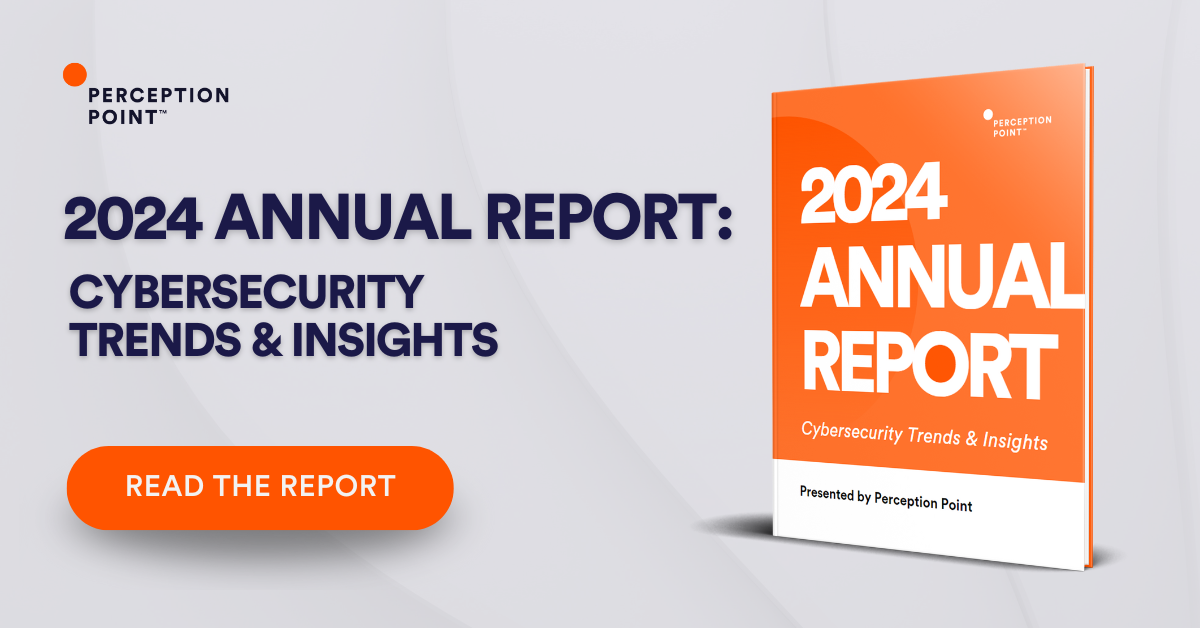What is BYOD?
Bring Your Own Device (BYOD) is a growing trend, in which devices owned by employees are used within the enterprise. Smartphones are the most common example, but employees may also bring their own tablets, laptops and USB drives.
BYOD is part of the IT consumerization trend—the deployment of consumer software and hardware in enterprises. Bring your own technology (BYOT) refers to the use of consumer devices and applications, selected and configured by employees, in work environments.
In some cases, employee-owned equipment is allowed for use by the company, and may even be subsidized or supported by the IT organization. In other cases, the equipment owned by the employee is part of a parallel ecosystem known as shadow IT—hardware or software unknown or disallowed by the organization’s central IT department.
Whether your organization supports employee-owned hardware and software or not, the reality is that employees will at some point use personal devices to connect to the corporate network or access corporate data, and this poses a security risk. Many companies implement BYOD policies to minimize risk and address the need for consumer technology in the workplace.
In this article
Why is BYOD Important?
When employees use technology they are familiar with, they are inherently more productive. Many employees are digital natives, and find it difficult to function without their personal devices. When using personal devices at work lets them focus on their work, rather than adapting to the digital tools provided by the enterprise.
According to a Dell survey, 61% of millennials and 50% of workers 30 years or older believe that technology tools they use in their personal lives are more effective and productive than those they use in their professional lives.
Another benefit of BYOD is major cost savings. According to a Cisco report, Companies implementing BYOD can save $350 per employee per year, by passing on the cost of equipment to their employees.

Tal ZamirCTO, Perception Point
Tal Zamir is a 20-year software industry leader with a track record of solving urgent business challenges by reimagining how technology works.
TIPS FROM THE EXPERTS
- Implement role-based access control for BYOD devices. Ensure that employees’ access to corporate data and systems is strictly based on their role within the organization. Limiting access based on roles reduces the attack surface and minimizes the risk in case a personal device is compromised.
- Develop an incident response plan. Tailor your incident response plan to account for BYOD devices. Include steps for remote locking, wiping corporate data, and notifying users. Also, establish clear communication channels to quickly address incidents involving personal devices.
- Regularly audit and review BYOD policy compliance. Conduct regular audits to ensure compliance with BYOD policies. This includes checking whether employees are adhering to security protocols, such as using VPNs, keeping devices updated, and reporting lost or stolen devices immediately.
- Utilize zero-trust network access (ZTNA). Adopt a zero-trust approach to network access for BYOD devices. Ensure that every access request is authenticated, authorized, and encrypted, regardless of the device’s location or ownership, to reduce the likelihood of breaches.
- Conduct regular phishing simulations. Run targeted phishing simulation campaigns focused on employees. This helps to raise awareness of potential phishing threats and ensures that employees are better prepared to recognize and report suspicious emails or links encountered on their personal devices.
BYOD Pros and Cons
BYOD has many advantages and disadvantages to consider. Here are some of the benefits of BYOD to organizations:
- Better equipment—personal equipment is usually faster and more advanced than aging equipment provided by IT departments.
- Employee satisfaction—most employees find personal equipment more comfortable and efficient to use. BYOD employees are typically more satisfied with their user experience than those with corporate devices.
- Reduced costs—when employees bring their own equipment, this means the enterprise spends less on new equipment, and also saves the cost of maintenance and technical support.
- Increased productivity—employees working on personal devices are more productive and have less technical issues.
- Easier onboarding and offboarding —onboarding a new employee or terminating employment with company-provided devices can be a difficult process. BYOD, when properly managed, can make employee transitions much easier to manage.
What are the risks of BYOD?
- Limited control and difficulty of monitoring usage of multiple types of devices.
- Security risks caused by employees accessing corporate systems and data on personal devices. Personal devices, even those covered by a BYOD policy, generally do not have the same level of security as corporate devices.
- Employee privacy can also be an issue. Organizations must use security features or deploy security solutions on personal devices, to ensure the security of corporate data. However they must do this without compromising the privacy of the employee’s private data.
When considering a BYOD policy, every company must perform a risk assessment and understand the impact of personal devices. Financial, healthcare, law firms, or companies in other regulated industries, will face much more serious consequences of BYOD security issues.
The type of corporate data being accessed is also important—encrypted data is less sensitive than cleartext. Publicly available company information is less sensitive than personally identifiable information (PII) or company intellectual property.
Alternatives to BYOD: CYOD and COPE
While BYOD has compelling advantages for both organizations and employees, there are alternative models. Two models adopted by many organizations are CYOD and COPE.
Choose Your Own Device (CYOD)
This policy allows companies to offer a set of pre-approved devices and let the employee choose between them. These devices have a secure configuration and come with business applications pre-installed. CYOD policy allows users to select their own equipment and choose devices they are more comfortable with, while companies maintain ownership and cover costs.
CYOD is a compromise between BYOD and a strict company-owned equipment policy, because it gives employees some freedom. The company selects the type of equipment to deploy, to ensure compatibility and enforce a certain level of security on all devices. Unfortunately, employees are not always happy with the choice of equipment available. Even if the selection is broad, the employee may not find a device they are familiar or proficient with.
Corporate-Owned, Personally-Enabled (COPE)
This strategy provides employees with devices that are fully owned by the company. While the company maintains ownership and pays for the device, users are allowed to personalize it. They are allowed to download software that is not work related (with some restrictions of course), and customize the interface to their liking.
COPE provides the organization the highest level of control over user equipment. The company does not give up ownership and can ensure devices are pre-configured to ensure security and compatibility with enterprise systems—effectively, the company can harden and lock the device in advance.
However, COPE can be inconvenient to employees, as they do not have the ability to choose equipment that suits their needs. Another disadvantage of COPE is that it is the most expensive model for the enterprise.
Creating Your BYOD Policy
A BYOD policy contains the rules governing the level of corporate involvement in the management of employee-owned devices. The policy defines the level of IT support provided by the organization to the employees, as well as the areas employees are responsible for.
Typically, BYOD policies contain:
- Clear documentation of employer and user responsibilities.
- Specific instructions regarding the software application used to manage network devices.
- Signed agreements acknowledging that all employees understand the policy and agree to comply.
Organizations also choose to add the following information to their BYOD policy:
- Security policies—based on industry standards, such as data encryption and using strong passwords.
- User guidelines—defined for the purpose of preventing BYOD users from introducing threats into the corporate network.
- Formal BYOD training—designed for the purpose of clarifying policies and providing employees with updated information.
BYOD Best Practices
There are many valuable techniques you can use to implement your BYOD policy. Here are key practices to consider.
Security First
BYOD devices are usually not controlled by IT. This means each employee must be trained to implement security first when protecting the device. Employees should be encouraged to add multi factor authentication to their devices and use strong passwords. Organizations should consider providing employees with the tooling needed to protect their BYOD devices.
Workforce Education
Employees should be properly trained in security risks they may face while using their BYOD devices. Risks like shadow IT, phishing schemes, and malware should be clearly explained to each BYOD user, as well as the proper measures required to prevent and respond to these security incidents. An educated employee can potentially prevent a massive breach.
Establish a Culture of Trust
BYOD devices can significantly escalate the damage insider threats might achieve with their privileges. Establishing a culture of trust throughout the organization can help create a deeper connection between the employees and the organization, and potentially prevent privilege abuse by disgruntled staff members or ex-employees.
Establish an Employee Exit and Onboarding Plan
When employees use company devices, it is relatively easy to control how the device and the information it stores should be treated once employees leave the company. However, when employees use their own devices, the organization cannot easily wipe out the data. Establishing an employee exit and onboarding plan can help you set clear expectations and rules regarding how to secure corporate information during these transition periods.
Learn more in our in-depth guide to BYOD security
BYOD Solutions
Implementing a BYOD strategy in most organizations requires additional technologies or solutions, which make it possible for users to bring their own devices, while accessing managed IT resources.
Mobile Device Management (MDM)
This is the most common form of BYOD management. MDM solutions can be deployed locally or in the cloud. They enable management of mobile devices, including deployment, security, monitoring, and integration with enterprise systems. They can protect corporate applications and data on personal devices, and automate delivery of enterprise applications to these devices.
MDM aims to prevent company policy violations, while maintaining employee productivity. MDM solutions enable:
- Separation of company data from personal data
- Protection of email and corporate documents on user devices
- Enforcing company policies such as disallowed applications or web content
- Remote management of mobile devices such as smartphones, laptops and tablets
Endpoint Protection Platforms (EPP)
As the BYOD trend gains momentum, endpoint security becomes very difficult. When deciding on a BYOD policy, your organization must address legal, privacy, HR, and many other concerns. BYOD introduces access and security challenges. Phishing attacks can lead to identity theft, data loss, IP theft, compliance fines, and legal exposure.
An EPP is a solution deployed on endpoint devices, which can prevent file-based and fileless malware attacks, detect malicious activity by the user (or an attacker who has compromised the device), and dynamically respond to security events and alerts. EPPs also provide the critical ability to remotely investigate security incidents on an endpoint, and perform remediation to mitigate threats.
EPPs prevent a variety of threats by providing the following measures:
- Next Generation Anti-Virus (NGAV)—detects and blocks malware, including new types that evade detection by modifying binary signatures.
- User and Event Behavior Analysis (UEBA)—detects unusual or suspicious behavior on the endpoint and alerts security staff.
- Application control and whitelisting—enabling the organization to define specific applications and websites that are allowed on the endpoint, and blocking all others.
- Device control—allows security teams to remotely control endpoints, collect data and enforce policies for audit, investigation and compliance purposes.
- Sandbox—an isolated location on the device that can detonate potential malware in a controlled manner, analyzing it without threatening other parts of the device.
Desktop Virtualization: VDI and DaaS
Virtual desktop infrastructure (VDI) solutions provide a way for remote devices to access an enterprise-controlled desktop environment at any time. The IT team provides access to these virtual desktops and selects which resources are available to different categories of end users.
When BYOD users work on an enterprise-hosted desktop, the organization has improved control over their use of business applications and data. For example, it is possible to limit a user’s ability to download files or copy-paste information to the local device (while this may also hinder productivity).
VDI solutions require a major investment in infrastructure. A growing alternative, which is very easy to deploy and does not have large upfront costs, is desktop as a service (DaaS). DaaS is VDI hosted and operated by a cloud provider, billed according to desktops actually used.
BYOD with Perception Point Advanced Browser Security
erception Point Advanced Browser Security adds enterprise-grade security to standard browsers like Chrome, Edge, and Safari. The solution fuses advanced threat detection with browser-level governance and DLP controls providing organizations of all sizes with unprecedented ability to detect, prevent and remediate web threats including sophisticated phishing attacks, ransomware, exploits, Zero-Days, and more.
By transforming the organizational browser into a protected work environment, the access to sensitive corporate infrastructure and SaaS applications is secure from data loss and insider threats. The solution is seamlessly deployed on the endpoints via a browser extension and is managed centrally from a cloud-based console. There is no need to tunnel/proxy traffic through Perception Point.
An all-included managed Incident Response service is available for all customers 24/7. Perception Point’s team of cybersecurity experts will manage incidents, provide analysis and reporting, and optimize detection on-the-fly. The service drastically minimizes the need for internal IT or SOC team resources, reducing the time required to react and mitigate web-borne attacks by up to 75%.
Customers deploying the solution will experience fewer breaches, while providing their users with a better experience as they have the freedom to browse the web, use SaaS applications that they require, and access privileged corporate data, confidently, securely, and without added latency.
Contact us for a demo of our Advanced Browser Security solution, today.

Bring Your Own Device (BYOD) is a growing trend, in which devices owned by employees are used within the enterprise. Smartphones are the most common example, but employees may also bring their own tablets, laptops and USB drives.
When employees use technology they are familiar with, they are inherently more productive. Many employees are digital natives, and find it difficult to function without their personal devices. When using personal devices at work lets them focus on their work, rather than adapting to the digital tools provided by the enterprise.
Here are some of the benefits of BYOD to organizations:
– Better equipment
– Employee satisfaction
– Reduced costs
– Increased productivity
– Easier onboarding and offboarding
– Limited control and difficulty of monitoring usage of multiple types of devices.
– Security risks caused by employees accessing corporate systems and data on personal devices.
– Employee privacy can also be an issue.
While BYOD has compelling advantages for both organizations and employees, there are alternative models. Two models adopted by many organizations are Choose Your Own Device (CYOD( and Corporate-Owned, Personally Enabled (COPE).
There are many valuable techniques you can use to implement your BYOD policy. Here are key practices to consider:
– Security First
– Workforce Education
– Establish a Culture of Trust
– Establish an Employee Exit and Onboarding Plan
– Mobile Device Management (MDM)
– Endpoint Protection Platforms (EPP)
– Desktop Virtualization: VDI and DaaS
























